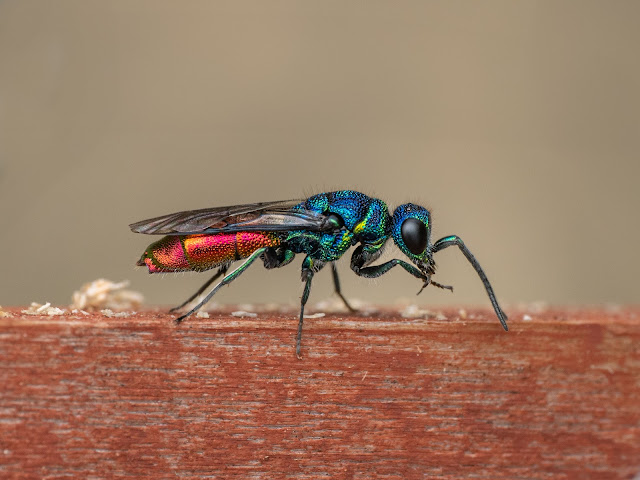I wasn't the only watcher. There were several ruby-tailed wasps waiting around. They are cuckoo wasps and lay their eggs in the nest of other solitary wasps.
Within a few minutes the ruby-tailed wasp had returned to the nest and started to chew out the mud seal.
You can see her ovipositor is extended ready for action.
As I understand it, the mason wasp lays a series of eggs in different cells along the length of the nest, separated by mud wall in the same was a a mason bee so I presume the ruby-tailed wasp, with a short ovipositor, can only parasitise the front cell. I hope I'll be watching to see what emerges next year.
PS. The photos are attracting a lot of attention on Facebook. The experts on the BWARS page say the mason wasp is Symmorphus bifasciatus and the ruby-tailed wasp is likely to be Chrysis angustula.











No comments:
Post a Comment